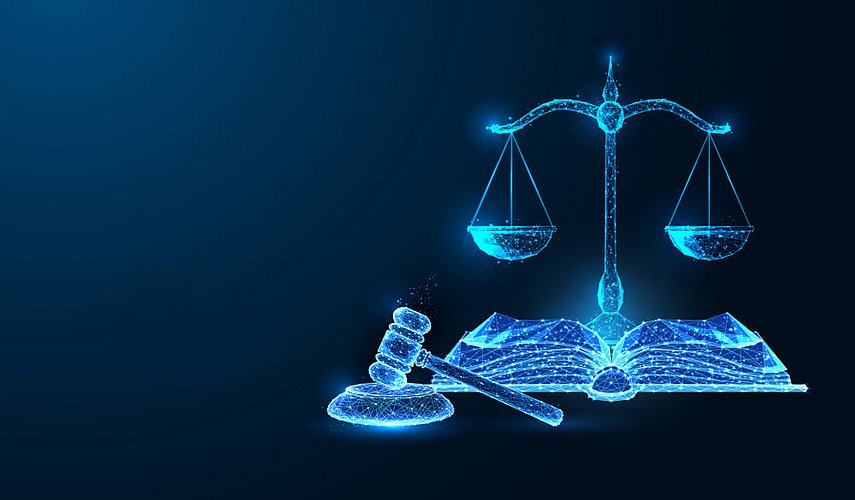New EU Directive on Cross-border Online Distribution of Television and Radio Programmes
Update IP, Media & Technology No. 21
Almost at the same time as the much-noticed and controversially discussed Directive on Copyright in the Digital Single Market (see Update IP No. 12: Agreement on the Reform of the Digital Copyright Law) and barely noticed by the public, another European Directive on copyright law was adopted. The Directive with the cumbersome title “Directive (EU) 2019/789 of the European Parliament and of the Council of 17 April 2019 laying down rules on the exercise of copyright and related rights applicable to certain online transmissions of broadcasting organizations and retransmissions of television and radio programmes, and amending Council Directive 93/83/EEC” aims to facilitate the acquisition of EU-wide licences for the online distribution of television and radio programmes in order to better meet consumer expectations and the interests of broadcasters, distribution services and right holders.
Example ‘cable retransmission’
The regulations on the retransmission of television and radio programmes by cable network operators have been taken as an example. For the public broadcast of television and radio programmes, broadcasting organisations acquire the primary right of use and enjoyment from the respective owners of the copyright and related rights. If a cable networt operator feeds in these programmes in its cable network and makes them available to its subscribers against a fee, this is a form of a secondary exploitation, which is interfering with the exclusive exploitation right of the author or any other owner of protective rights.
According to the applicable provisions, the owners of rights, however, cannot prohibit the retransmission by cable. They only have a claim to remuneration, which can only be exercised by a collective management organisation. Cable network operators can acquire cross-border retransmission rights centrally from one of the national collective management organisations (“One-Stop-Shop” principle). Responsibility lies with the collective management organisation in that country from which the broadcasting organisation is transmitting the television or radio signal for the first time (“Country of Origin Principle”).
There is one exception for the broadcasting organisations themselves, who may exercise their own copyright and related rights themselves. They are, however, subject to an obligation to contract with the cable network operators and have to give their consent to the distribution of their programmes on reasonable terms. On the other hand, upon the broadcasting company’s request, the cable network operator has to grant access to its cable network (see also for Germany sections 19 et seq. and section 87 German Copyright Law – UrhG).
More legal certainty for online services
Although many online services show certain similarities with the classical cable retransmission, they cannot be regarded as equal. As a result, there has been until now no uniform legal practice in the Member States for the analogue application of the provisions regarding cable retransmission to these services. This applies not only to non-linear services (webcasting/television catchup-replay-services, etc.), but also to IPTV (Internet Protocol Television), OTT (Over-the-Top), let alone online-exclusive platforms, such as Netflix. Especially in the German jurisdiction, there was no majoritiy in favour of a corresponding application of the provisions for the cable transmission (see also District Court Hamburg, judgment dated 8 April 2009, reference number 308 O 660/08, ZUM 2009, 582 – Zattoo; Higher Regional Court Cologne, judgment dated 4 September 2015, reference number 6 U 7/15, GRUR-RS 2015, 55272, mn. 34 f. – Internetfernsehen). Therefore, until now each owner of rights had to acquire individual rights of use for the online distribution of television and radio programmes.
The new Directive, which has to be implemented into national law by 7 June 2021, makes a significant contribution to more legal certainty for providers of online services. A distinction is made between three variants:
1. Supplementary online services
If broadcasting organisations make their programmes and accompanying material available online at the same time as the first broadcast or subsequently, for example in a media library, the principle of free access within the EU will apply from then on. For television programmes, the new freedom is however limited to newscasts and current affairs programmes plus fully financed in-house productions. According to Art. 3 paragraph 1 of the Directive, television broadcasts of sports events are explicitly excluded.
2. Direct injection
In the case of direct injection, the broadcasting organisation transmits their programme-carrying signal to a signal distributor without the programme-carrying signals being accessible for the general public during this transmission. The signal distributor makes the programme available for their subscribers for the first time. Art. 8 paragraph 1 of the Directive clarifies that broadcasting organisations and signal distributors are performing a single act of public playback. The Member States can specifiy the terms and conditions for obtaining of the permission from the owners of rights themselves. Recital 20 of the Directive contains insofar the proposal that the signal distributors have a “benefit from a mechanism of mandatory collective management of rights”, therefore that collective management organisations will be mandated with the exercise of this function and that there is an obligation to contract. If the signal distributor is purely a provider of technical services not in charge for the selection and the content of the programme, they shall, on the other hand, not be deemed to be a participant in the communication to the public (see also ECJ, judgment dated 19 November 2015, C-325/14 – SBS/SABAM).
3. Retransmission
The retransmission of initially linearly distributed television and radio programmes by an internet service provider is mainly regulated according to the regulations of the retransmission by cable. The exercise of the rights is exclusively carried out by the collective management organisations according to Art. 4 paragraphs 1 and 2 of the Directive. On the other hand, according to Art. 5 of the Directive, broadcasting organisations are excluded from the compulsory participation in collective management organisations. However, the requirement applies that negotiations between broadcasting organisations and operators of transmission services have to be conducted “in good faith”.
A decisive criterion is, according to Art. 2 number 2 letter b) of the Directive, that the retransmission through an internet access service takes place in a “managed environment”. According to Art. 2 No. 3 of the Directive, a managed environment is given if “an operator of a retransmission service provides a secure retransmission to authorised users”. This is based on the fact that according to recital 14 of the Directive only certain online retransmission services shall be privileged. The facilitations are intended to only benefit services offered in an environment where only contractually authorised users have access to the retransmissions and where the level of security to protect the content provided is comparable to that of cable networks or closed internet protocol-based networks where retransmission content is encrypted.
What the German legislator will make of these requirements has yet to be seen and commented on. It would be desirable if OTT offers that register their users and which use provably stable infrastructures were also to be included.
Conclusion
The Directive is a right step on the path to a viable, technology-neutral copyright law that allow a utilisation of rights across the European Union on fair terms. It is to be hoped that the German legislator will use this opportuntity to create a legal framework that is open to technical advances and that creates a suitable balance between the interests of the owners of the rights, the service providers and the consumers. Here, Directive (EU) 2018/1808 on audiovisual media services (Audiovisual Media Services Directive) will also need to be observed, the implementation of which is currently discussed and which also takes into consideration the market situation changing due to online services. More information on this to follow …

![[Translate to English:]](/fileadmin/_processed_/e/3/csm_Schmittmann__Michael_print_a4c7f18531.jpg)









